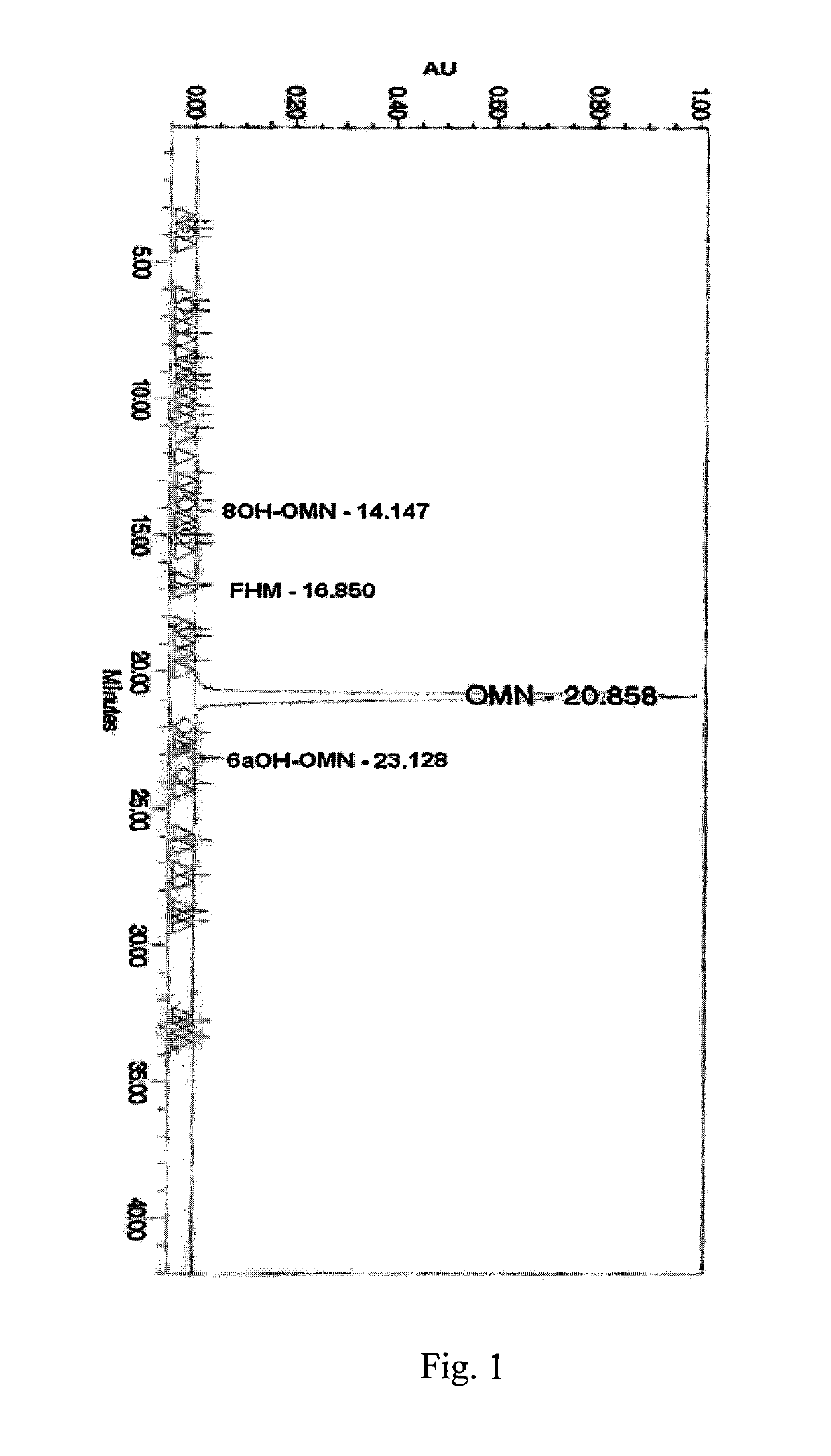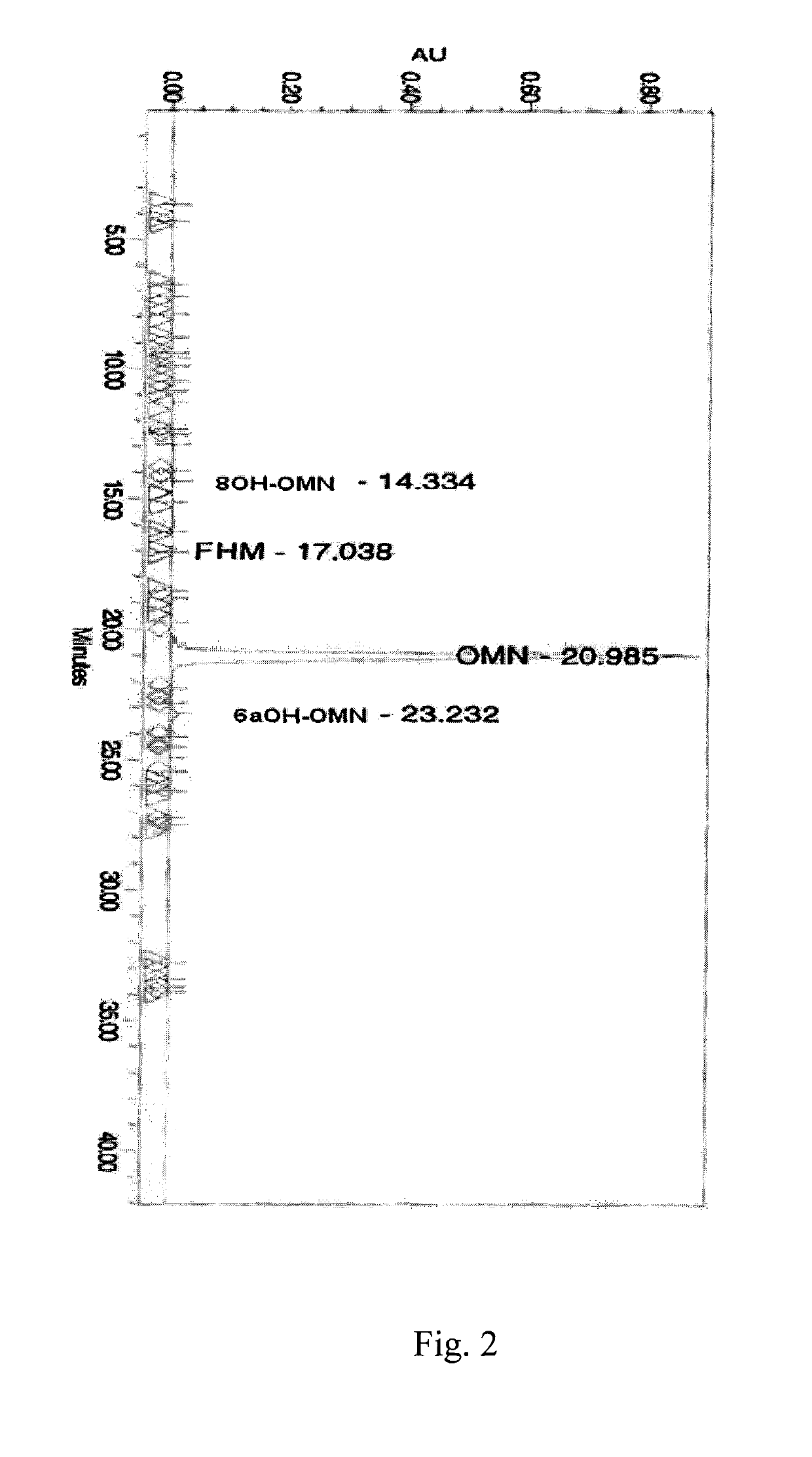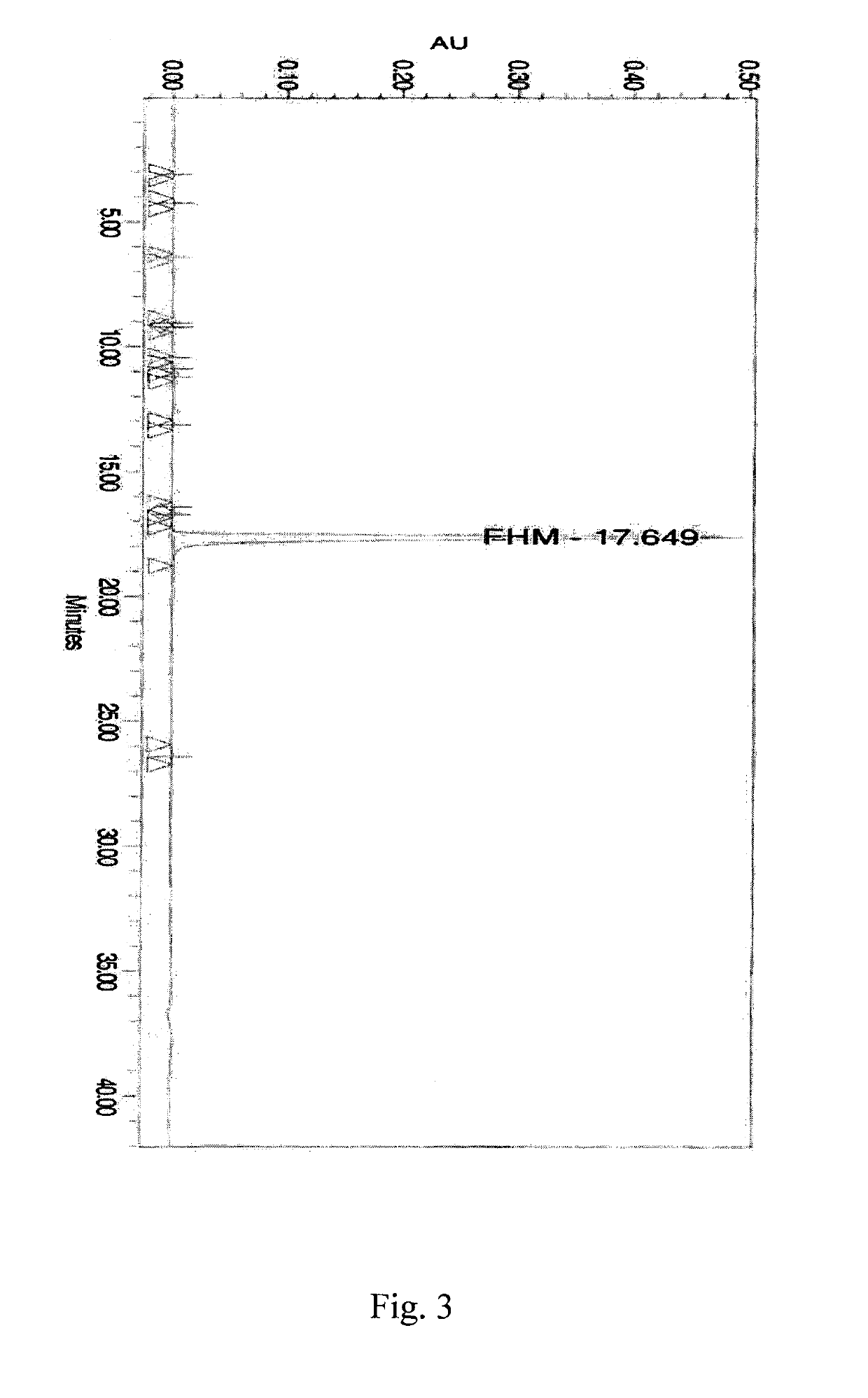Process for improved opioid synthesis
a technology of opioid synthesis and process, which is applied in the field of process for improving opioid synthesis, can solve the problems of undesired by-products in the final pharmaceutical composition or final dosage form, time-consuming and insufficient volume efficiency, and insufficient separation of by-products from the final opioid, etc., and achieves volume efficient, less by-products, and reduced manufacturing costs
- Summary
- Abstract
- Description
- Claims
- Application Information
AI Technical Summary
Benefits of technology
Problems solved by technology
Method used
Image
Examples
example 3
Preparation of 14-hydroxymorphinone from Oripavine without Sulfuric Acid
[0715]
[0716]1. Oripavine (99.99 g, 336 mmol) was charged as a slurry in deionized water (150 mL) into a 500 mL jacketed vessel.
[0717]2. The slurry was stirred (250 rpm) at ambient reaction temperature (approximately 25° C.).
[0718]3. Formic acid (100 mL, 2332 mmol, 88%) was added to the mixture in one portion. The solids completely dissolved upon the addition, and a slight exothermic reaction was observed (temperature increase to approximately 34° C.). The solution was then allowed to cool back to ambient temperature (approximately 25° C.).
[0719]4. While holding the temperature at approximately 25° C., hydrogen peroxide (31.2 mL, 363 mmol, 35%, M=11.86) was added to the solution at a controlled rate of 1.56 mL / minute (0.05 equivalents / minute).
[0720]5. After addition was complete, the solution was allowed to stir an additional 30 minutes at ambient temperature.
[0721]6. The solution was then heated to 48° C. and he...
example 4
Preparation of Oxymorphone from 14-hydroxymorphinone
[0725]
[0726]1. 5% Palladium on carbon (0.60 g) was charged into a 1 L ZipperClave® autoclave high pressure reaction vessel, followed by the solution prepared in Example 3.
[0727]2. Deionized water (100 mL) and formic acid (100 mL, 88%, 2332 mmol) were added into the reaction solution in one portion.
[0728]3. The vessel was sealed and hydrogenated at 60 psia (413.69 kPa), 55° C., for 3 hours and 10 minutes.
[0729]4. The solution was vented and purged with nitrogen 3 times.
[0730]5. A sample of the solution was analyzed by HPLC for reaction completion.
[0731]6. The palladium on carbon was removed from the solution by filtration through 2 layers of filter paper and the filtrate was stored in a refrigerator at approximately 5° C. overnight.
[0732]7. The filtrate was transferred to a cooled 1 L jacketed vessel (O-5° C.).
[0733]8. 50% sodium hydroxide was added into the cooled solution at a rate such that the temperature of the solution did not...
example 5
Preparation of 14-hydroxymorphinone Sulfate
[0737]
[0738]1. Oripavine (30.0 g, 101 mmol) was charged as a slurry in deionized water (45 mL) into a 300 mL jacketed vessel, overhead stirred and equipped with a temperature probe and an addition funnel.
[0739]2. The jacket temperature for the vessel was set to 22° C., and the slurry was stirred at 500 rpm.
[0740]3. Formic acid (30 mL, 700 mmol) was added into the vessel. The solids readily dissolved into solution upon addition of formic acid. During the formic acid addition, the temperature of the reaction mixture increased to 30° C.
[0741]4. Sulfuric acid (2.5 mL, 45 mmol) was added to the solution, and the solution was stirred at 500 rpm.
[0742]5. After the solution temperature had cooled below 25° C., hydrogen peroxide (10.25 mL, 119 mmol) was added to the reaction through the addition funnel at a rate of 0.17 mL / minute.
[0743]6. After the hydrogen peroxide addition was complete, an additional 5 mL of deionized water was added to the reacti...
PUM
| Property | Measurement | Unit |
|---|---|---|
| temperature | aaaaa | aaaaa |
| wavelength | aaaaa | aaaaa |
| temperature | aaaaa | aaaaa |
Abstract
Description
Claims
Application Information
 Login to View More
Login to View More - R&D
- Intellectual Property
- Life Sciences
- Materials
- Tech Scout
- Unparalleled Data Quality
- Higher Quality Content
- 60% Fewer Hallucinations
Browse by: Latest US Patents, China's latest patents, Technical Efficacy Thesaurus, Application Domain, Technology Topic, Popular Technical Reports.
© 2025 PatSnap. All rights reserved.Legal|Privacy policy|Modern Slavery Act Transparency Statement|Sitemap|About US| Contact US: help@patsnap.com



